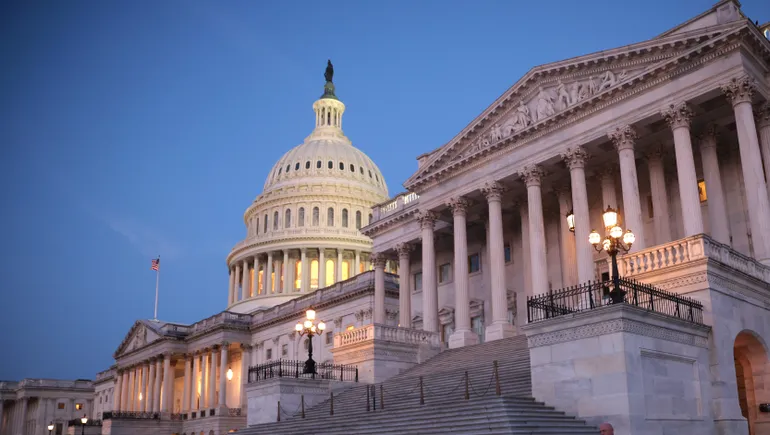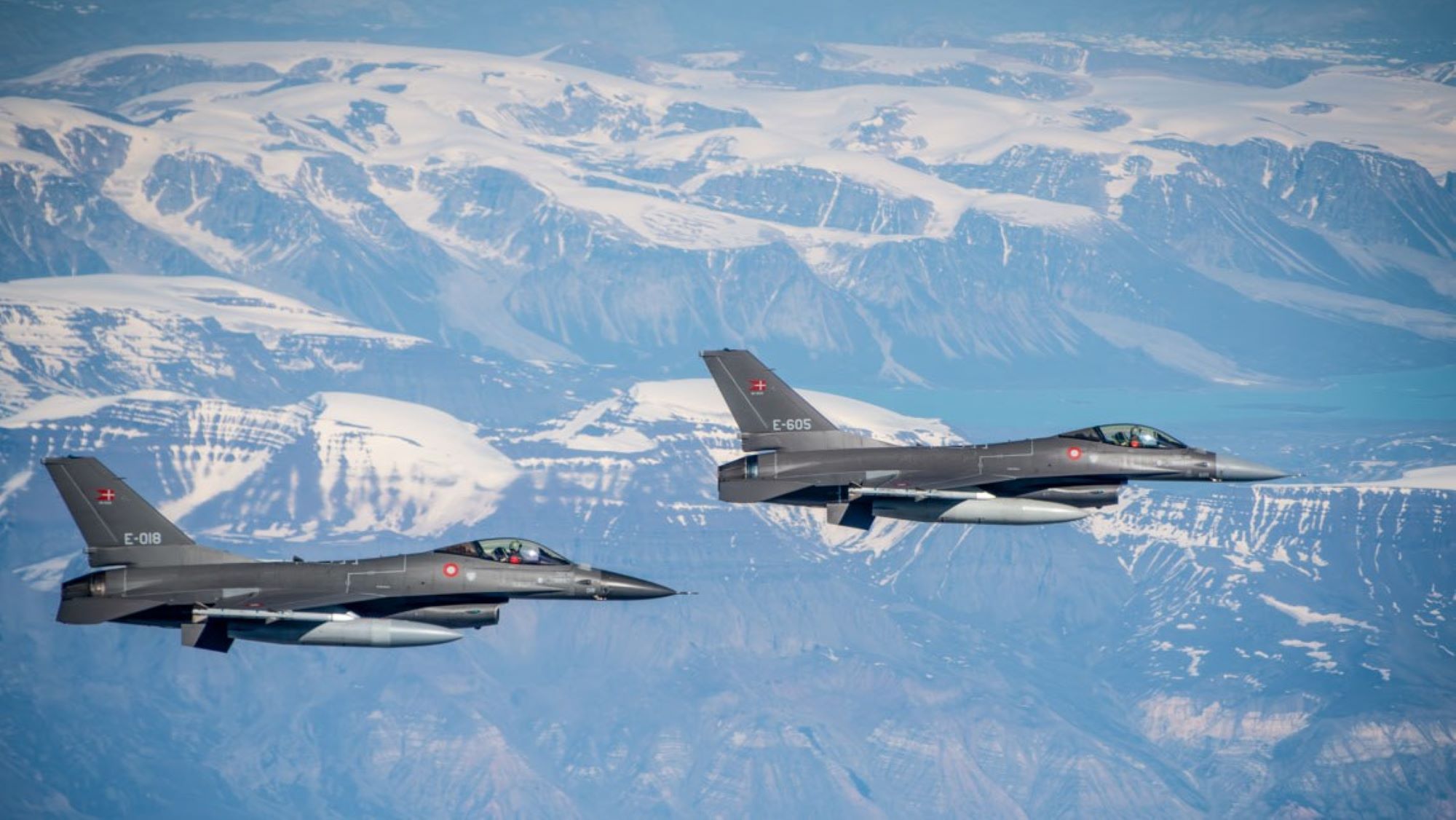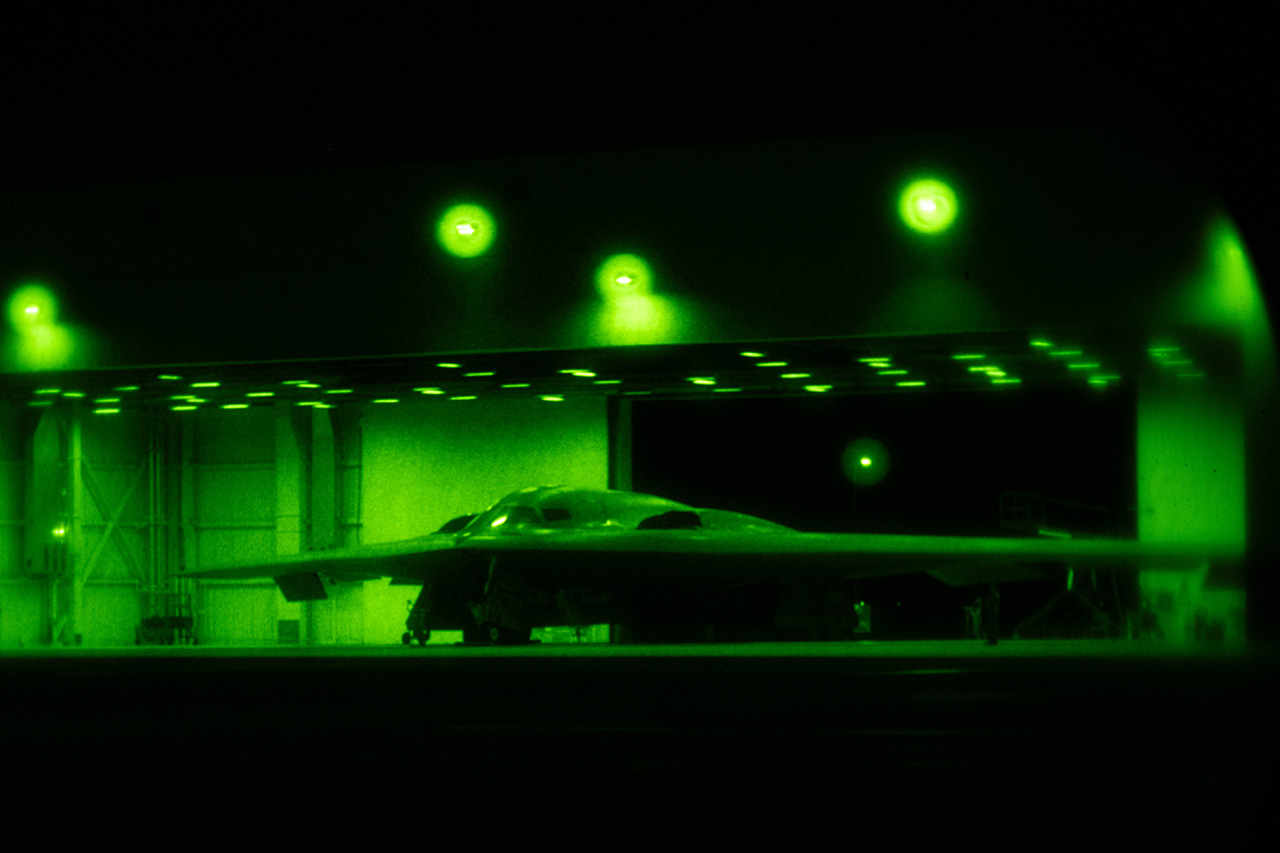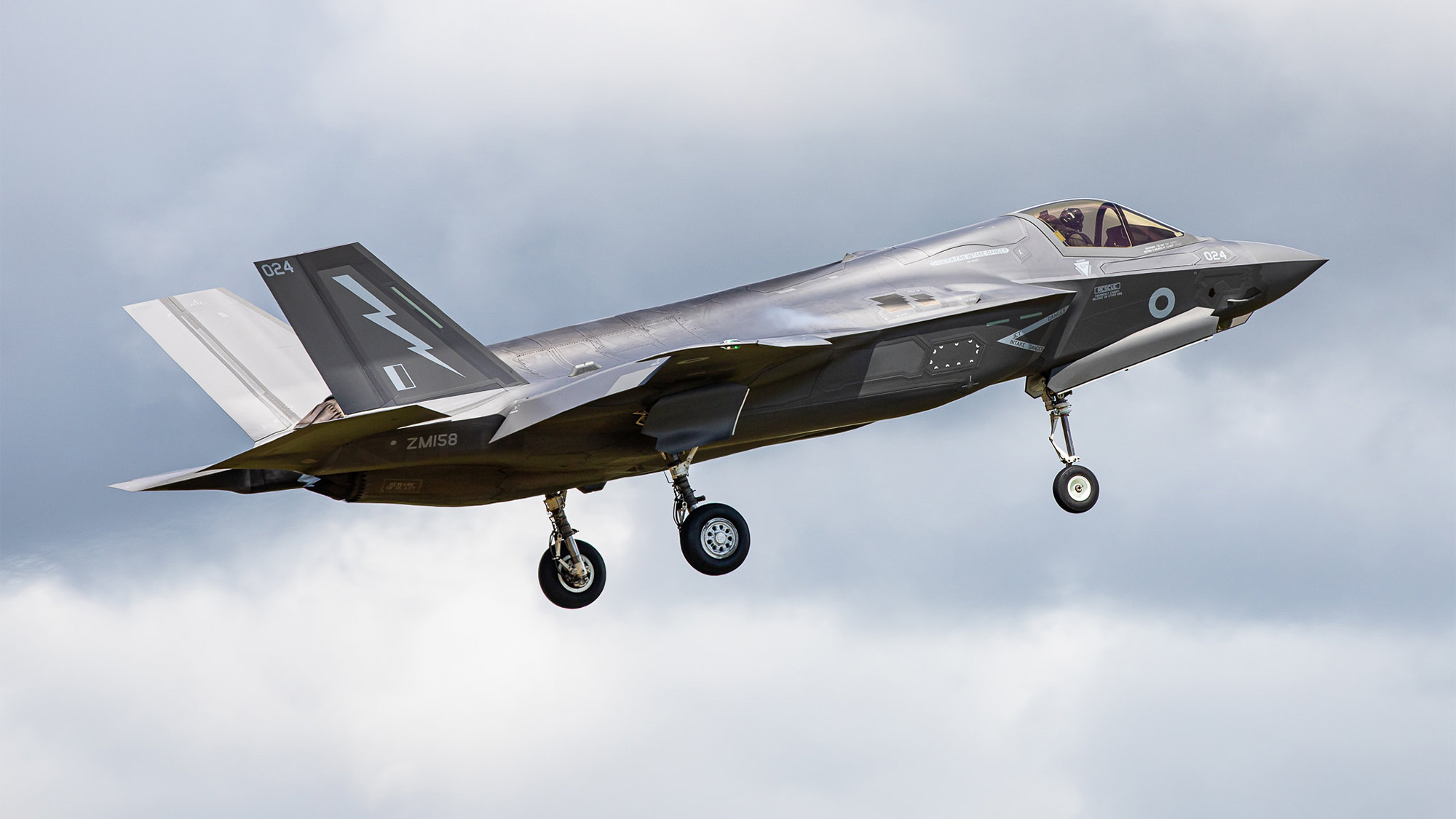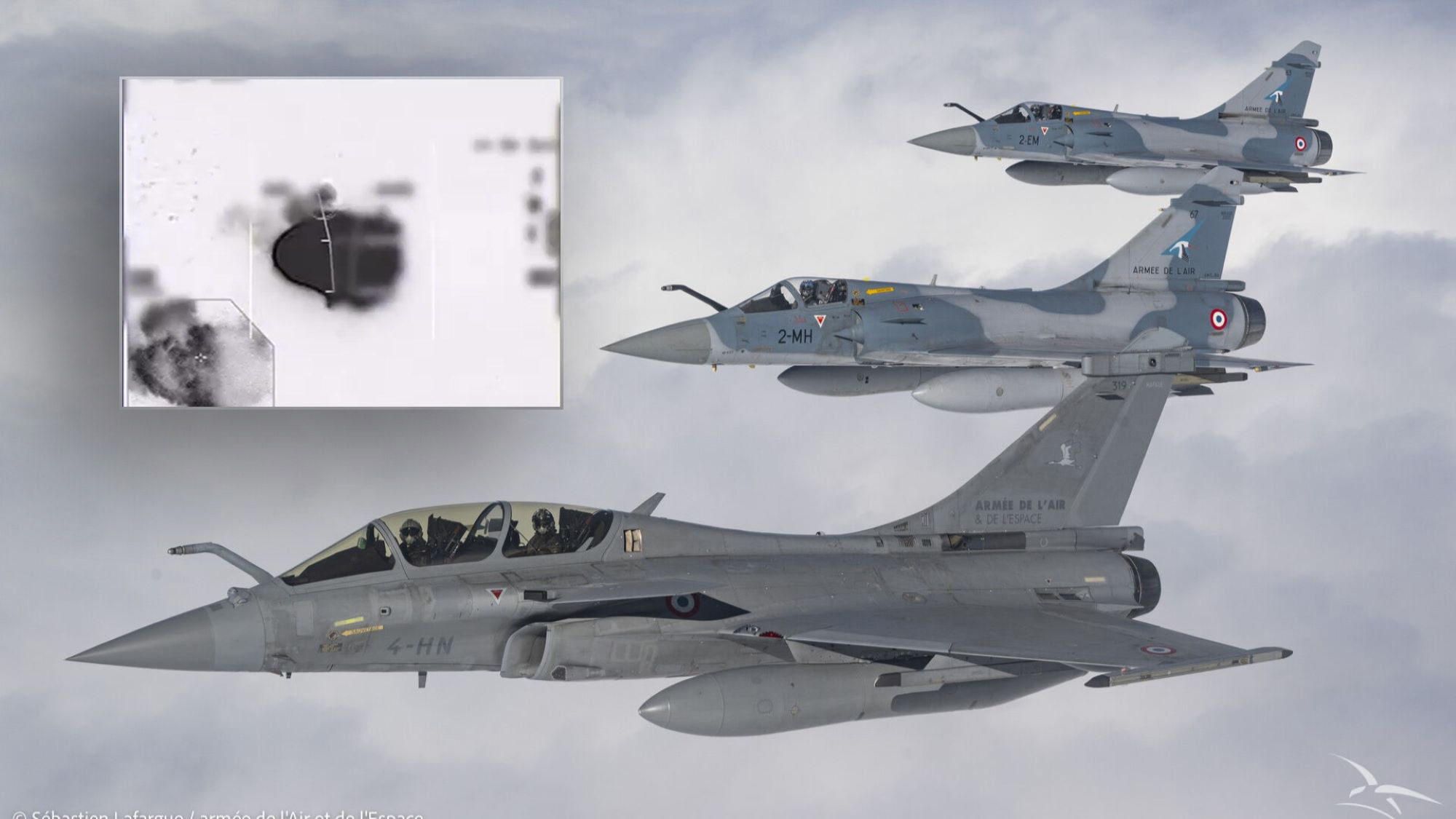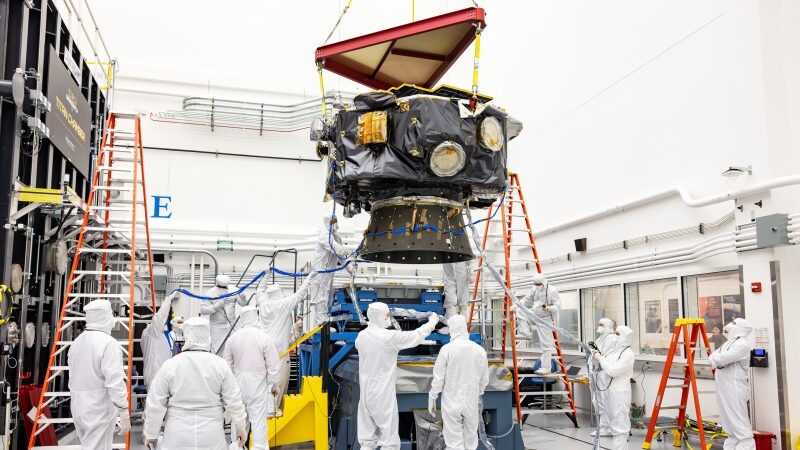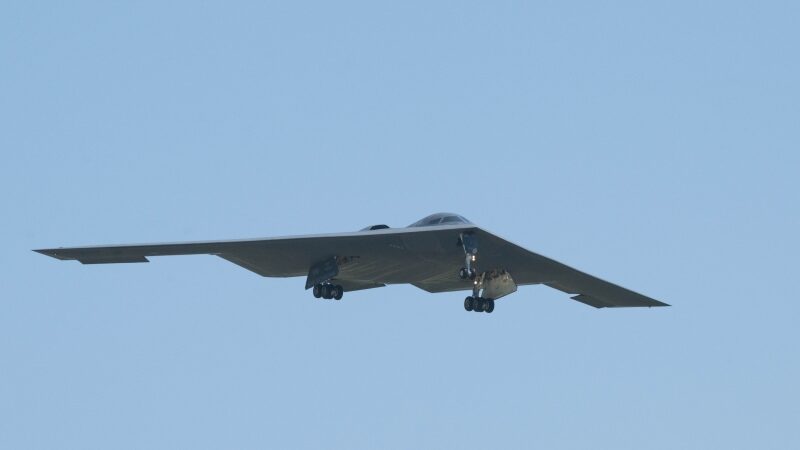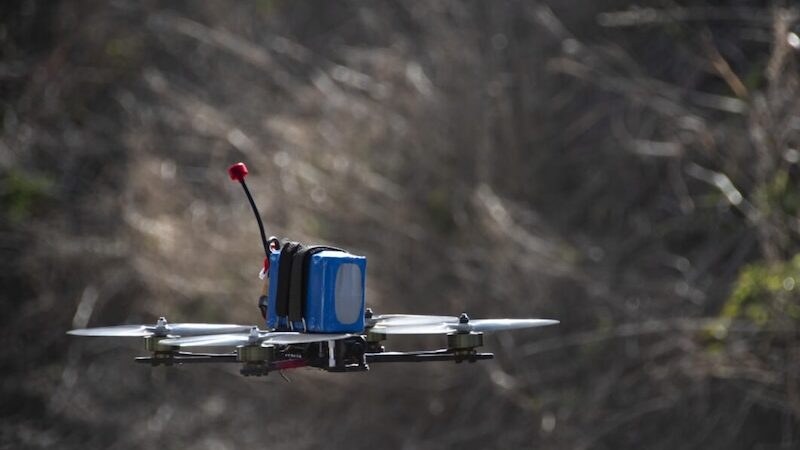EXCLUSIVE: US loosens some rules for offensive counterspace ops, wargaming
Some decision-making authorities, previously closely held by the president or secretary of defense, have been delegated to US SPACECOM, according to sources, but military space leaders want more freedom to act.


Artwork depicting space warfare. A missile, launched from a ground station, is seen approaching a satellite in orbit above the Earth. (Getty images)
WASHINGTON — When the Space Force recently put out a forward-leaning “warfighting” framework, it included an unusually blunt warning for military commanders: ensure the rules of engagement for space operations aren’t too restrictive, or the US will be at a severe disadvantage in the heavens.
That warning was public, but Breaking Defense has learned it comes amid a parallel push by the Space Force and US Space Command (SPACECOM) over the last several years to gain more military decision-making control over the use of anti-satellite (ASAT) weapons — decision-making authority that has historically been closely held by the president and/or the secretary of defense.
While delegation of presidential authority with regard to space weapons is obscured by deep secrecy and classification, discussions by Breaking Defense with more than a dozen sources — including former Pentagon and US government civilian officials, retired and current military officials and outside space experts — have revealed that gradual but ground-breaking shifts in military freedom to prosecute war in the heavens have begun to take place in response to growing threats from Russia and, in particular China.
“We have made some changes that delegated some authorities down to Space Command commander under certain circumstances,” a former senior Space Force official said. “But in my view, not enough.”
For example, over the last decade there has been a gradual loosening of the reins on case-by-case determinations about the use of some types of temporary or reversible counterspace actions, such as jamming or lazing, according to a handful of sources. However, these sources did not indicate that there has been any relaxation of the requirement for approval by the president and/or the secretary of defense for a kinetic attack to destroy an enemy satellite.
“Under some circumstances some types of ASAT activity can be delegated. … But there are just too many combinations of possible effects and possible causes to come out with a blanket statement,” one former senior Pentagon space policy official said. “You can clearly say no one prior to 2020 ever delegated the responsibility to kinetically engage and destroy another country’s satellite.”
Changes in delegation of authority sped up following the standup of SPACECOM in 2019, the former senior Space Force official said. And according to three sources close to the debate, there were intense discussions as late as last summer within the Biden administration about delegating authority for the use of offensive satellite attack weapons to SPACECOM.
“OSD [Office of the Secretary of Defense] Space Policy was engaged in the strongest push I’m aware of to get authorization to use offensive counterspace capabilities delegated down from the [White House] to the [Secretary of Defense] and eventually to” the head of SPACECOM, said another former Pentagon official.
John Plumb, the head of OSD Space Policy under President Joe Biden, did reveal to Breaking Defense one significant move by that administration: allowing joint force planners to include space warfighting in their routine contingency plans and wargames for future conflict. (He would not, however, address the key question of whether destructive, kinetic strikes can be included in those plans.)
“The procedural way to make sure this happens is to develop military operational plans, approved by the [Defense Secretary], that include specific effects in space. That way, if and when those operational plans are ordered to be executed in a conflict, the included space warfighting effects have also been approved, and the commander [of] US Space Command can order those effects as he/she sees fit,” he said.
In the past, several former US government sources explained, planning for use of any potential offensive space capability had to be undertaken off to the side in special cells of only highly cleared personnel. This is because the specifics of what space weapons the US may or may not currently have available — beyond a few acknowledged ground-based jamming systems — is something that remains highly classified.
“What the department needs for the future fight is to normalize space as a military operational domain,” Plumb said.
Further, there is large-scale agreement among sources that the trend line toward moving space warfighting into mainstream military operations seems likely to continue.
“There seems to be this thing about space exceptionalism, like space is special,” echoed the former senior Space Force official. “I think that thought is getting antiquated as we’re starting to normalize warfighting in a multidomain context.”
And while that hasn’t fully happened yet, the former official said, “I think we’re getting closer.”
Fears Over Nuclear War Drove Space Policy
The crux of the decades-long concern about ASATs is the linkage between space capabilities and command and control of nuclear forces, for both the US and its adversaries. The thinking was that destroying another nation’s satellites that are providing support to the use of nuclear weapons — such as specialized communications or missile warning birds — could be read as a sign of an imminent nuclear strike, and so should be treated with the same consideration as a decision to launch a US nuclear weapon.
But with the proliferation of new technologies enabling counterspace operations, there has been a gradual turn in how the US government views military actions in orbit. A pivotal moment was the 2013 Chinese test of a suspected ASAT missile that nearly reached geosynchronous Earth orbit, where many important national security satellites reside.
Since then, US leaders have fixated on how to meet the growing threats to US space assets that stem from both the increased military reliance on space for tactical operations and the rapidly improving space capabilities of potential adversaries.
Originally, the presidential hold on American ASAT use — which dates at least from the Clinton administration — was aimed primarily at destructive, kinetic energy missiles. At that time the US had only tested two types of satellite killers: a nuclear detonation in space, and an air-launched kinetic energy missile shot from an F-15.
Eventually, restrictions were extended to other forms of satellite interference.
While unwilling to comment on the actual policy situation due to its classified nature, Scott Pace, the former executive director of the National Space Council during the first Trump administration, explained that in general the rules governing US warfare can include special restrictions on the use of some capabilities.
“Some weapons, e.g., nuclear weapons, are held at presidential level, while use of other weapons might be delegated to lower level commanders,” said Pace, now director of the Space Policy Institute at George Washington University.
The Clinton administration’s 1996 National Space Policy [PDF] said, “[T]he United States will develop, operate and maintain space control capabilities to ensure freedom of action in space, and if directed, deny freedom of action to adversaries.” According to a senior military official at the time, that use of the phrase “if directed” was a key reflection of the president’s hold on ASAT decision-making.
That “if directed” restriction reappeared in the 2006 policy [PDF] issued by President George W. Bush, despite the policy’s more aggressive commitment to ASAT development. It was also during the Bush administration that the first Joint Doctrine on Space Operations, JP 3-14, was published by the Joint Chiefs of Staff, and included the “if directed” language.
The 2010 Obama administration space policy [PDF] substituted “if directed” with “if necessary,” as did the 2020 policy [PDF] by the first Trump administration and one issued by Biden in 2024 [PDF] — though it is unclear why that change occurred.

A view of the U.S. Starfish Prime high-altitude nuclear test taken at Maui Station in Hawaii on July 9. 1962. A view of the U.S. Starfish Prime high-altitude nuclear test taken at Maui Station in Hawaii on July 9. 1962. (Los Alamos National Laboratory)
Interestingly, in the 2020 version [PDF] of JP 3-14, the “if directed” language shifted to “when directed” — with one expert speculating that perhaps the change was reflective of the growing perception among military leadership that war in space during a future conflict was going to be impossible to avoid.
A Space Force spokesperson deferred comment to the Office of the Secretary of Defense; neither SPACECOM nor the White House media office responded to requests for comment for this report.
In response to questions from Breaking Defense, a defense official said: “The President is the decisionmaker on when and if to delegate authority for military activities. The Secretary of Defense regularly engages and advises the President, where appropriate, to ensure the Department has the requisite authority to conduct military missions consistent with the President’s strategic objectives.”
Loosening The Rules For Space Ops
As the debate around ASAT authorities carries on mostly in secret, a slightly more open one has taken place with regard to in-space rules of engagement, or ROE.
Over the past several years, the Defense Department and military leaders not only have begun to openly talk about growing space threats from Russia and China, but also about US intentions to use offensive space capabilities to counter those threats. The Space Force now considers establishing “space superiority“ to be its primary mission, with counterspace weapons to prosecute “orbital warfare” a key to doing so.
Lt. Gen. Thomas James, SPACECOM deputy, told the Mitchell Institute on May 8 that “there’s been a change” in thinking in recent years in order to refocus SPACECOM space warfare.
“The way that we think is ‘warfighting’, the way we speak is ‘warfighting’, the way that we do is ‘warfighting’. And it’s this critical mass [that’s now] on an accelerated slope,” he said.
James added that SPACECOM’s job is “generating requirements,” and “understanding what our vision and view of orbital warfare is going to look like.”
Thus, the push from military space leaders to shift decision-making authority down the chain of command links with the related effort by Space Force and SPACECOM to loosen the ROE in orbit.
Rules of engagement define in great detail how the US military can use force in various circumstances, and are generally set by senior commanders. While any launch of major combat operations must be approved by the president along with the general ROE, the choice of any one weapon system to use against any one target usually is left up to the combatant commander, who can then delegate that authority farther down the military chain of command.
The bottom-line issue, one former Air Force space policy expert said, is that current ROE are seen as “in conflict” with the process set in motion two years ago or so by Chief of Space Operations Gen. Chance Saltzman to ensure that the space domain is treated by civilian leaders and military operators no differently than other domains when it comes to warfighting.
A “founding principle” of the Space Force is to push decision-making down all the way to delta commanders (deltas are the equivalent of Air Force wings), said another space policy expert who works with the Space Force.
For example, the new “Space Warfighting Framework,” released April 17, issues a strong caution against tying Guardian hands with ROE.
“Overly restrictive ROE can be contrary to decentralized execution and may lead Guardians to rely on ever-increasing levels of oversight and approval, potentially leading to situations where Guardians hesitate to act. Such a scenario may increase risk, both to the mission and to the Joint Force” the framework says.
“As such, commanders should be careful not to create ROE so restrictive that they place friendly forces at unnecessary risk or at an operational disadvantage. This could be a pitfall in a peer or near-peer, contested environment,” it adds.
Pace explained that there are two basic types of ROE.
“Standing rules of engagement” apply in peacetime, “and allow commanders to act in imminent self-defense,” he explained. Operational ROE “apply during an armed conflict and tell commanders what conditions apply to their choices of weapons, targets, and operations.”
Today’s standing ROE for self-defense across all domains largely date, with some modern revisions, to 2005, and include some constraints on what the military can do in space that still apply, according to several sources — for example, any action should “minimize the creation of space debris.”
Standing rules can be, and often are, changed for combat operations under operational ROE. Further, Pace said, operational ROE “can even change in real time as conditions warrant.”
Military space leaders want both sets of ROE to be further loosened to give Guardians more options for action, to protect US space assets in the run up to and during conflict, as well as to attack adversary satellites being used to target US forces, a handful of sources inside and outside the government told Breaking Defense.
This campaign, like the broader strategic one, is expected to continue under the current Trump administration.
“I do think there’s lots of room for additional delegation of authorities in ROE without destabilizing [results],” the former senior Space Force official added, for example, with regards to using weapons with “reversible effects.”























































